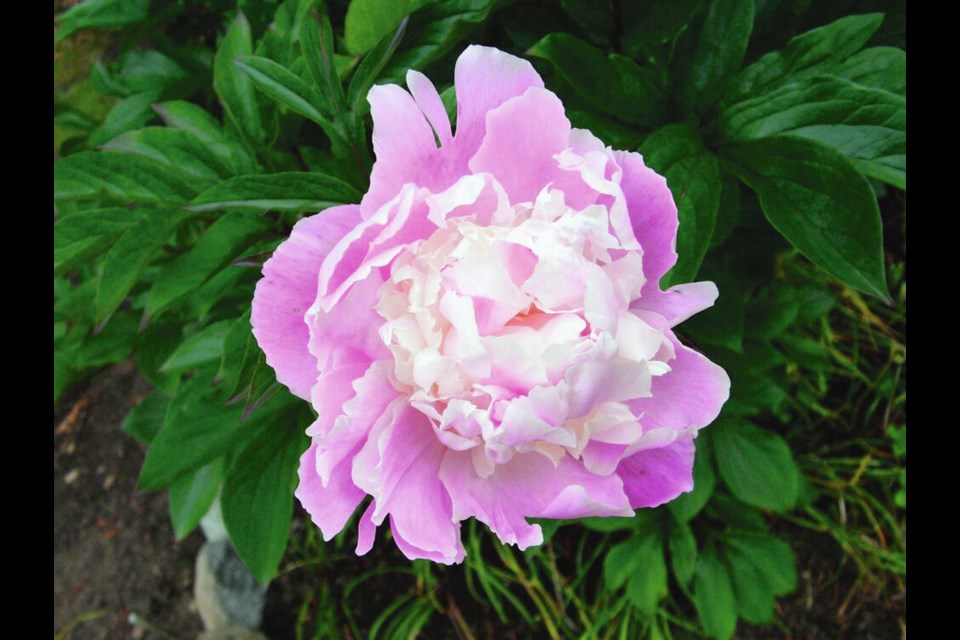Dear Helen: For the past two years I have grown Paperwhite narcissus bulbs on white stones in a tall glass jar, with the idea of having fragrant blooms indoors in January. I keep them in the fridge until early December and then plant the bulbs and set them on a sunny window sill with water just up to the bottom of the bulbs. In both years, only one of seven bulbs produced flowers. Can you tell me why?
C.B.
Paperwhites don’t require refrigerator type chilling prior to planting. The bulbs need only be kept in open bags, in a dark place with cool room temperatures. Exposure to heat can inhibit flowering.
When planting in stones, the top two-thirds of each bulb should remain exposed above the pebbles and the container needs to be kept in a cool, dark place for the rooting period. Once roots are well established, the planted bulbs are brought gradually into brighter light.
Although planting in water and decorative pebbles is the more popular method, planting in soil is easier. It also generally produces longer-lasting flowers. In soil, only the top third of each bulb is left exposed above soil level. The cool, dark rooting period is the same.
Paperwhite bulbs will not fare well in water-logged conditions. In soil, the planting mix needs to be kept just modestly moist. Bring the planting out of the dark when roots can be observed at the pot’s drainage holes. In glass jars, the water level needs to be kept just at the bulb bases.
As the rooted bulbs are brought gradually into good light, keeping the planting as cool as possible will help to prolong bloom.
Dear Helen: My rose bushes are still holding fast onto their leaves. I’ve noticed other shrubs, and trees, not yet dropping leaves. Is it still recommended to remove remaining leaves on roses in late autumn?
F.R.
Most roses are susceptible to various diseases such as black spot and also to a number of insect pests. Removing the leaves at some point in December is an important sanitation measure that helps to curtail the incidence of these issues.
After taking off the leaves, clean thoroughly under and around the plants, Scuffle the soil up lightly with a hand cultivator, then scatter a little lime before covering the area with a compost mulch to help bury disease spores.
Like you, I’ve noticed autumn leaf drop on trees and shrubs has not conformed to traditional patterns. I think the extended sunny warmth in October helped to delay the process. Another factor is the spotty nature of frost occurrences throughout Vancouver Island, because its topography is so widely varied.
An immense large-leaved maple tree in the back garden of a neighbour usually sheds its leaves in October. The leaves are commonly shared among gardeners on the street as they scurry to gather them up to use as winter mulch.
Too bad for one couple on the street. They left for Mexico early in November. They are big fans of those maple leaves, which had not yet begun to fall when they left. It wasn’t until two weeks ago that they began to hit the ground. I have six large bags full so far.
Dear Helen: My peonies and hostas have done a meltdown in the cold weather.
Should I leave the top growth as mulch to protect the roots, or clear it away?
C.P.
Neither of these perennials require winter protection for the roots. They are fully hardy, down to zone 3. Think Winnipeg.
Cutting down top growth and thoroughly cleaning the root area are good sanitation measures the help to control pests and diseases.
For the same purpose, I do not compost the top growth of either plant.
I cut down peony stems when most of the foliage has wilted and turned brown in the fall. I make the cuts slightly beneath soil level, taking care not to damage the pink buds of next year’s growth lying close to the soil surface.
Both benefit from a light liming and a shallow cover over the lime of a quality compost.
Dear Helen: I’ve just come upon tulip and daffodil bulbs, still in their packages. Is it too late to plant them?
F.G.
It is not too late, but plant, as long as the soil is not frozen, as soon as possible.



